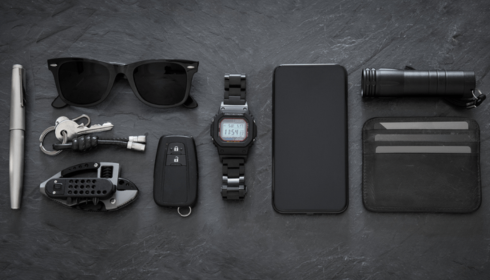
Everyday Carry: Practical Strategies for Concealed Self-Defense
Admin
- 0
Key Takeaways
- Discover how everyday carry (EDC) supports practical personal safety without disrupting your daily routine.
- Learn easy, actionable steps for integrating concealed self-defense tools into everyday life.
- Debunk common misconceptions and find research-backed insights on concealed carry.
- Access expert tips and further resources for responsible self-protection.
Why Everyday Carry Matters for Safety
Every day, people navigate unpredictable surroundings—commuting, running errands, or simply walking through their neighborhood. In an era of heightened awareness, being prepared is less about paranoia and more about having a practical sense of peace of mind. Everyday carry (EDC) represents a proactive approach to safety, allowing individuals to have the right tools within reach, just as one might wear a seatbelt—not expecting a crash, but ready in case. Today’s EDC enthusiasts are not just security professionals or law enforcement personnel; more civilians are recognizing the value of preparedness, especially as personal security concerns rise in both urban and rural areas. Integrating tools like concealed carry belly bands provides an effective and comfortable way to be prepared without drawing unwanted attention, helping users seamlessly incorporate self-defense into their routines.
The benefits of EDC go beyond self-defense in emergencies. Carrying means always having the right tool for the job—be it a flashlight in a dark parking lot, a first aid kit during an accident, or a defensive option in the event of a threat. Ultimately, EDC’s greatest strength lies in helping ordinary people feel capable in extraordinary situations.
Choosing Concealed Self-Defense Tools
The market for self-defense and EDC gear is vast, but not every tool fits every person’s lifestyle or comfort zone. The number one consideration when building an EDC kit should always be practicality. Pepper sprays, sturdy tactical flashlights, and slim, easily accessible holsters often become staples for those on the move. For concealed carry, comfort is essential—after all, a tool left at home out of convenience provides no benefit in an emergency. Well-designed solutions enable adaptable and secure placement on the body, making daily carry feasible for various clothing or activity choices.
Ease of use should outweigh the intimidation factor or perceived power. Many reliable EDC practitioners recommend starting with the basics. The best tool is the one you will carry—and reaching for it should be second nature, not a last resort.
Methods for Discreet and Comfortable Carry
Discretion is your central pillar of everyday carry. The most thoughtfully selected tool is ineffective if it’s uncomfortable, obvious, or cumbersome. Successful EDC strategies begin with selecting gear tailored to your body shape, wardrobe, and regular activities—whether you’re sitting at a desk, running errands, or working out. Different solutions, such as pocket holsters, lightweight pouches, and attire-integrated carry methods, allow users to maintain a loit’s file without sacrificing accessibility.
Legal Factors and Personal Responsibility
Carrying any defensive tool comes with significant responsibility—not only to oneself but also to others. The legality of concealed tools, particularly weapons and sprays, varies significantly between states, cities, or even specific venues. Regularly reviewing regional statutes is critical for anyone considering self-defense items as part of their EDC. Legal resources, certification courses, and reputable online guides keep carriers up to date and confident in their compliance.
Responsibility goes beyond legality. Maintenance (like checking expiration dates on sprays or performing regular function checks on holsters) ensures that your tool doesn’t let you down when seconds count. Safe storage at home or in a vehicle further reduces the risk of accidents or unauthorized access, reinforcing that EDC is part of a bigger safety culture, not just an individual choice.
Building Confidence: Training & Mindset
The effectiveness of any self-defense tool ultimately relies on the user’s skill and confidence. Skill doesn’t materialize overnight; it must be honed through repetitive, realistic practice. It might take shape at the range, through hands-on workshops, or via online training materials that emphasize both technique and scenario planning. True confidence also relies on mastering situational awareness, reading one’s surroundings, and identifying risks before they escalate—a skill applicable to both personal safety and general well-being.
Focusing on training and cultivating a safety-conscious mindset often results in reduced anxiety, improved decision-making, and enhanced readiness, without compromising daily comfort or ease.
When to Refine Your EDC Kit
Just as life circumstances shift, your EDC kit should adapt over time. Taking a new route to work, moving to a different climate, adjusting to a change in dress code, or even picking up a new physical activity may mean rethinking your daily carry setup. A periodic audit—say, every three to six months—ensures your gear is current, compliant, and comfortable.


